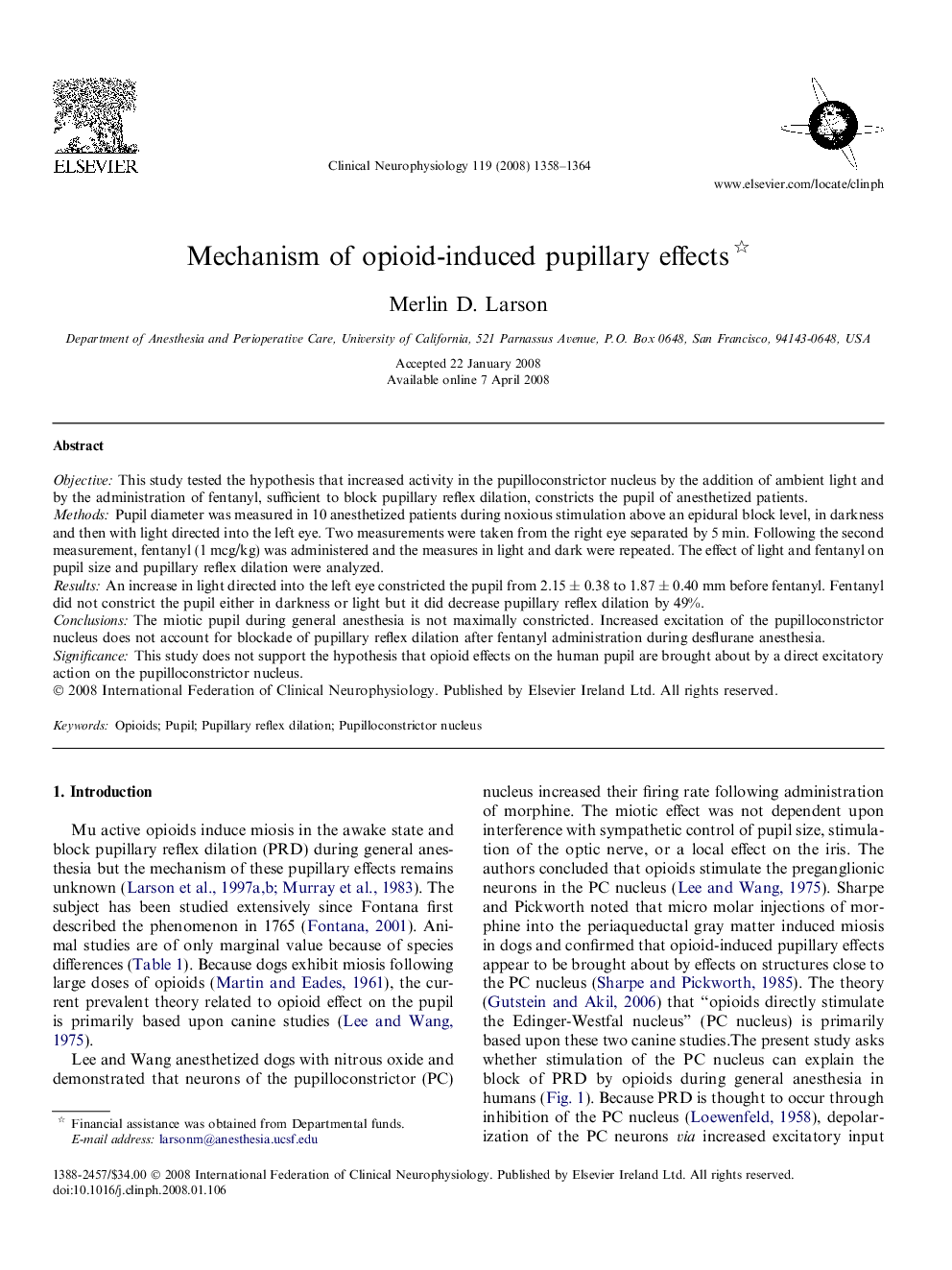| Article ID | Journal | Published Year | Pages | File Type |
|---|---|---|---|---|
| 3047455 | Clinical Neurophysiology | 2008 | 7 Pages |
ObjectiveThis study tested the hypothesis that increased activity in the pupilloconstrictor nucleus by the addition of ambient light and by the administration of fentanyl, sufficient to block pupillary reflex dilation, constricts the pupil of anesthetized patients.MethodsPupil diameter was measured in 10 anesthetized patients during noxious stimulation above an epidural block level, in darkness and then with light directed into the left eye. Two measurements were taken from the right eye separated by 5 min. Following the second measurement, fentanyl (1 mcg/kg) was administered and the measures in light and dark were repeated. The effect of light and fentanyl on pupil size and pupillary reflex dilation were analyzed.ResultsAn increase in light directed into the left eye constricted the pupil from 2.15 ± 0.38 to 1.87 ± 0.40 mm before fentanyl. Fentanyl did not constrict the pupil either in darkness or light but it did decrease pupillary reflex dilation by 49%.ConclusionsThe miotic pupil during general anesthesia is not maximally constricted. Increased excitation of the pupilloconstrictor nucleus does not account for blockade of pupillary reflex dilation after fentanyl administration during desflurane anesthesia.SignificanceThis study does not support the hypothesis that opioid effects on the human pupil are brought about by a direct excitatory action on the pupilloconstrictor nucleus.
